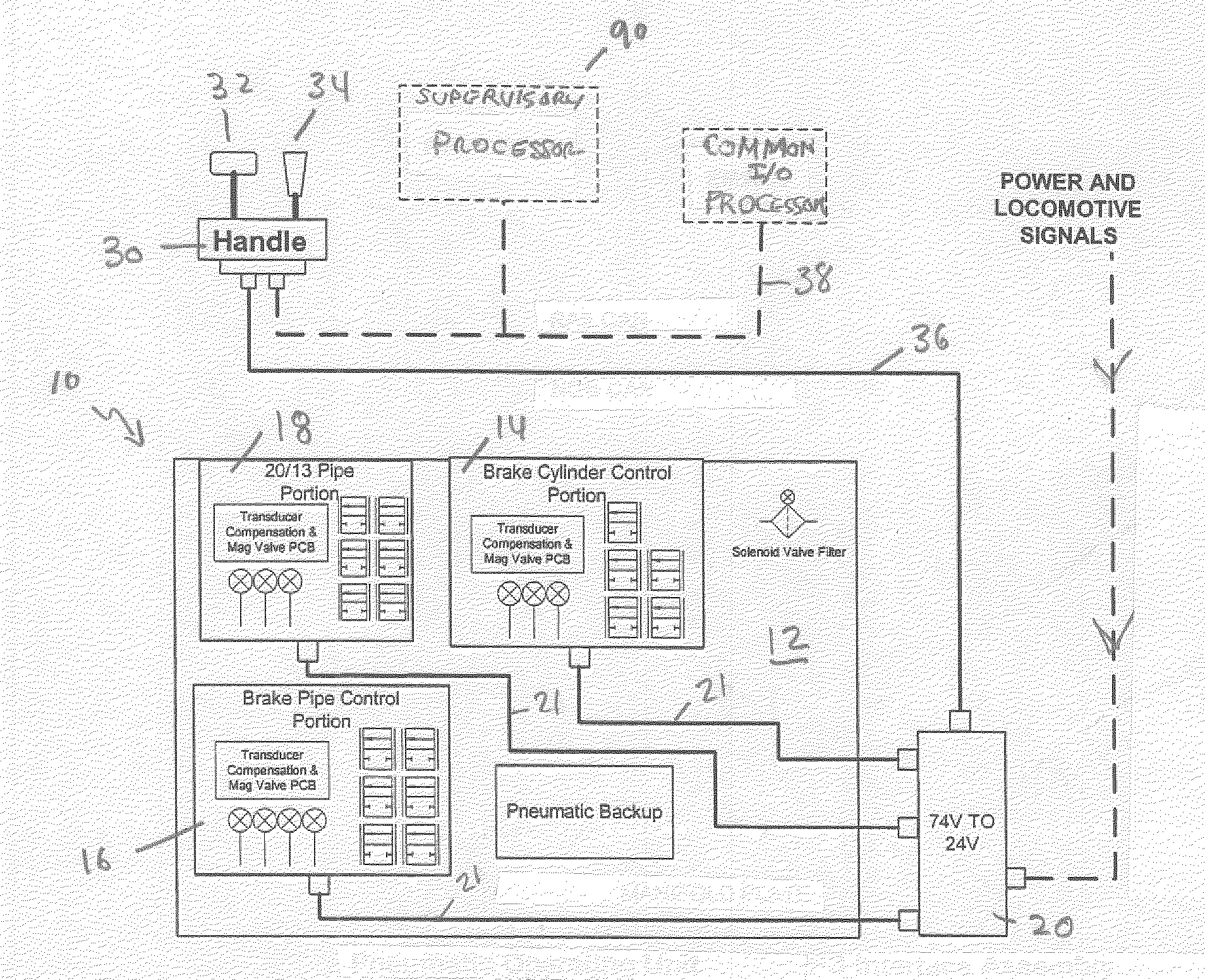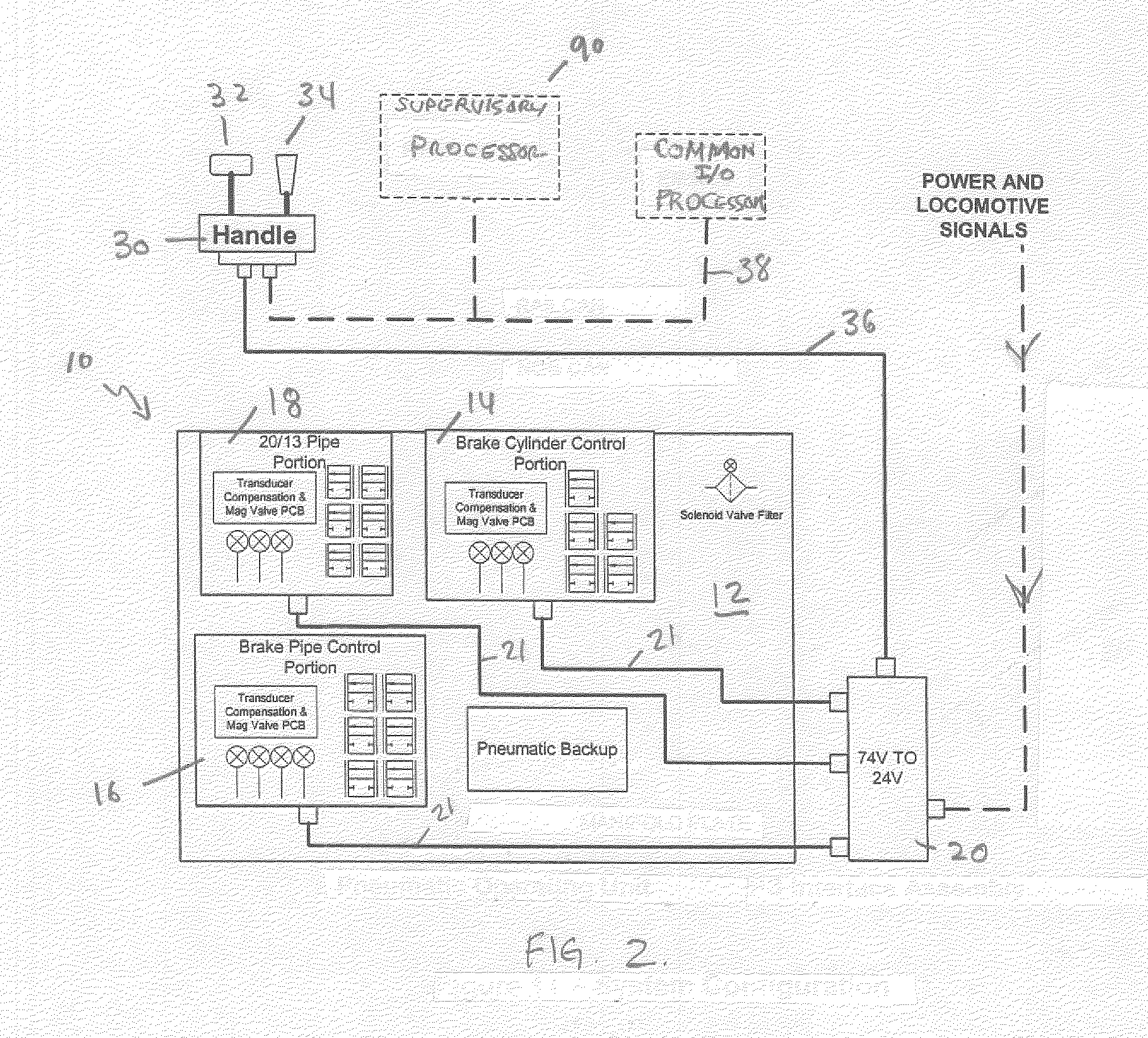Improved electronic control for railway airbrake
a technology of electronic control and airbrake, which is applied in the field of railway industry, can solve the problems of difficult maintenance of the unit in the field, and the extreme hardness of the sensitive computer electronics which control the device, and achieve the effect of improving physical configuration and being easy to repla
- Summary
- Abstract
- Description
- Claims
- Application Information
AI Technical Summary
Benefits of technology
Problems solved by technology
Method used
Image
Examples
Embodiment Construction
[0023] The air brake control described herein is made up of two major components, handle unit 30 and pneumatic operating unit 10. Handle unit 30 is typically located in the cab of a locomotive and is accessible by the engineer during normal operations. Pneumatic operating unit 10 is typically located in the air brake equipment locker under the cab of the locomotive.
[0024] Handle unit 30 has controls consisting of automatic brake handle 32 and independent brake handle 34. Automatic brake handle 32 controls pressure in the BP, which, in turn, controls the braking of all cars in the train, including locomotives in the train consist. Independent handle 34 controls the pressure in the IAR and ACT pipes, which in turn, controls the braking of the lead locomotive and additional locomotives in the train consist independently from automatic brake handle 32 and the rest of the train.
[0025] The air brake control in a locomotive in a typical train is set up in one of several modes, depending ...
PUM
 Login to View More
Login to View More Abstract
Description
Claims
Application Information
 Login to View More
Login to View More - R&D
- Intellectual Property
- Life Sciences
- Materials
- Tech Scout
- Unparalleled Data Quality
- Higher Quality Content
- 60% Fewer Hallucinations
Browse by: Latest US Patents, China's latest patents, Technical Efficacy Thesaurus, Application Domain, Technology Topic, Popular Technical Reports.
© 2025 PatSnap. All rights reserved.Legal|Privacy policy|Modern Slavery Act Transparency Statement|Sitemap|About US| Contact US: help@patsnap.com



